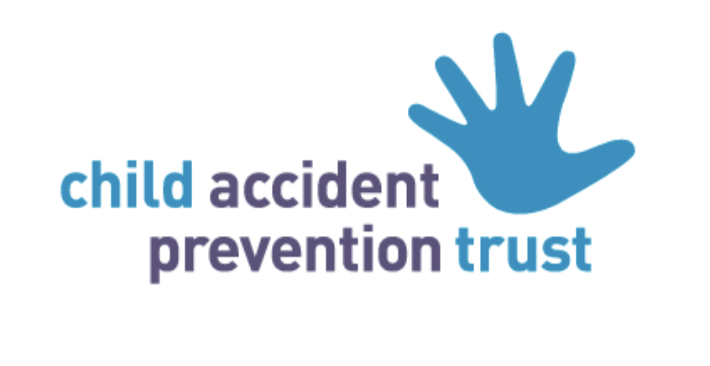Share because you care: working together for safer children

The Child Accident Prevention Trust’s annual UK-wide campaign, CHILD SAFETY WEEK, runs from 7 to 13 June this year.
CAPT’s Ian Evans talks about this year’s child safety week theme – Share Because You Care – why this is a message and opportunity for all those who work with children and families…and why this is a priority for every week of the year!
As safe as houses?
We like to think that our homes and communities are places of safety and security for children and families.
Sadly that isn’t always the case.
Every year in England an average of 55 children under the age of five die due to an unintentional injury. And unintentional injuries are a leading cause of death and acquired disability for young children.
Each year, too, there are also approximately 40,000 emergency hospital admissions and 370,000 visits to Accident and Emergency departments by under-fives.
And if that wasn’t shocking enough, hospital admission rates for unintentional injuries among the under-fives are 38 per cent higher for children from the most deprived areas compared with children from the least deprived.
80 per cent of these highly preventable injuries happen in the one place a child should feel safest – in the home!
Others take place on and near our roads, where children from the most deprived areas are three times more likely to be killed or seriously injured as a pedestrian, and six times more likely to be killed or seriously injured as a cyclist.
Other injuries again – for older children especially – take place during play and in situations where children do what comes naturally – push boundaries and take risks.
The costs of serious childhood accidents are staggering.
The multi-million pound financial burdens impact on the NHS and communities. The pain and stress felt by children and families are impossible to measure. Physical scars may be visible and treatable over time, but emotional damage may be deeply hidden.
A few seconds’ inattention or an unsafe situation can have consequences for a child which will last a lifetime.
Risk and reality – the domestic danger zones
Every home is different but how can an ordinary domestic setting be so full of risk for a young child? The evidence of deaths, injuries and hospital admissions speak for themselves and point to some clear prevention priorities.
Choking, suffocation and strangulation together make up the leading cause of accidental death among under-fives, and especially for very young children under 12 months. Causes include hanging and strangulation from common items such as window blind cords, choking from small objects and food which has not been properly cut up, suffocation from plastic bags and nappy sacks, and unsafe sleeping arrangements.
Falls are the main cause of injury-related admissions for under-fives. Falls from furniture are the most numerous but there are also a significant number of falls from stairs and steps. Falls from heights, such as open windows and balconies are particularly serious, but young children can also fall from high chairs, beds or while being carried.
Poisoning accounts for a large number of hospital admissions each year, especially from medicines accessible to children. However there are also a variety of everyday household poisoning hazards, such as laundry products and carbon monoxide.
Burns and scalds, often caused by hot drinks or hot bathwater, are particularly serious injuries often requiring lengthy periods of hospital treatment while also being disabling and disfiguring. The thinness of a child’s skin compared to an adult’s may sometimes be forgotten.
Many parents are unaware that children have no automatic reflex to let go of what’s burning them, and so household items such as cookers, kettles, irons, radiators and hair straighteners can all pose risks if not properly supervised.
Drowning is the second leading cause of injury-related death for under-fives. In the home itself, children left unattended in bath water result in a number of deaths. Outside the home, ponds, paddling pools and swimming pools and open water sites such as canals, rivers and beaches pose real hazards for unsupervised children of all ages.
Fires although the number of accidental dwelling fires has reduced in recent years, smoke, fire and flames still kill children each year. The main causes of these fires have been cooking appliances and misuse of equipment, but smoking materials lead to the most fire-related deaths. Many of the house fires attended by the fire and rescue service are homes without working smoke alarms.
Emerging injury issues require continued vigilance as well as effective product and consumer safety protection. Safety alerts have been issued recently amid growing concerns of the dangers posed to children by super strong magnets. The small magnets have been linked to rising numbers of serious injuries as, if swallowed, they can stick together and effectively burn holes in a child’s gut.
Button batteries are small, round, silver-coloured batteries that come in many different sizes and types. They power many of the devices in the home that make our lives more convenient. However, button batteries also cause serious internal injuries and at least two children a year have died as a result of swallowing them.
Roads and in-car safety Safety on and near roads, and in-car safety from equipment such as properly fitted car seats are also essential for families going out and about with young children, especially with summer approaching.
In the winter months, with darker mornings and evenings, children’s safety and visibility are also vital, especially as they get older and start to travel independently to school. Many schools have safe travel plans which encourage greater road safety awareness.
Making a difference – staying one step ahead
The disturbing numbers and the evidence of hospital admissions show the scale of the problem.
But they are not inevitable.
Every person who works in the front line of family support and community engagement can make a potentially life-saving difference. We can all be ‘partners in prevention’!
As this year’s Child Safety Week theme emphasises, taking child accident prevention seriously means that you share, because you care!
You can share your knowledge of children and what can put them at greatest risk.
Giving every child a healthy start in life means supporting parents and families as they try and keep one step ahead of developing children who will often surprise you by what they can do…where they can reach…what they can put in their mouths…and how fast they can shuffle, roll, crawl or even walk.
We all know that parents can’t have eyes in the back of their heads. But by keeping a watchful eye on a child’s normal development and progress, it becomes easier to spot those home hazards which perhaps hadn’t even been noticed before…
The interesting hot drink left lying on a low table…the tablets kept in that fascinating treasure chest we call a handbag…the window blind cord dangling within tempting reach…the forgotten button battery waiting to be rediscovered by exploring little hands…the climbing adventure which is the bedroom and its furniture!
Professionals who visit or meet families can ensure that the simple conversations about routines and wellbeing also include some suggestions for safety in the home and surroundings.
Most parents welcome that interest and it’s often surprising how a simple chat about a safety matter becomes an opportunity for everyone to share stories of their own ‘near misses’! What we may have previously dismissed as ‘common sense’ can take on a startling and vivid reality when the causes and consequences of childhood injury are fully realised.
“You can share with parents and with colleagues your understanding of accident prevention and where to find advice and help“
Raising a family today is hard, and the pandemic pressures have often made things more difficult. The challenges of successive lockdowns and their impact on jobs, relationships, childcare and lack of readily accessible family support are only too real.
Homelessness, overcrowding, poor facilities, limited scope for adaptations due to landlord restrictions and other difficult housing conditions have meant that prolonged lockdowns can lead to much greater exposure to risk, especially where young children are involved.
The emotional and practical support that can be offered by a range of professionals working in partnership is needed today more than ever.
Empowering parents and carers, building confidence and suggesting simple and manageable steps to safety can all be powerful ways to get alongside families.
And repeated small changes can become automatic good habits!
You can share with parents and with colleagues your understanding of accident prevention and where to find advice and help.
Many of the serious childhood accidents that we’ve looked at can be easily prevented -sometimes it’s just a matter of knowing where to look.
Safety equipment is needed in every child’s home and some of the ‘best buys’ include stair gates, cupboard locks, smoke and carbon monoxide alarms, child window locks, blind cord safety devices, door ‘slam guards’, corner protectors and bath mats.
In some areas, items of safety equipment may be available through local authority or other local organisations, and the fire and rescue service may also provide smoke alarms following a ‘safe and well’ visit.
Carrying out a home safety check is a good idea for any family. Taking a fresh look at your surroundings helps to identify the biggest risk areas, while highlighting the equipment which will help to make things safer. There is guidance on the CAPT website about a useful checklist approach: https://www.capt.org.uk/News/moving-home-a-safety-checklist
Resources and information
Advice and information can easily be found on CAPT’s website, and Child Safety Week is a great opportunity to share downloadable guidance, including accessible information which is also translated. These resources are available all year round: https://www.capt.org.uk/Pages/Category/child-safety-week
Build a safety resource library for yourself and colleagues by obtaining CAPT leaflets, posters, practitioner guides and DVD resources, all available from our online shop: https://www.capt.org.uk/Pages/Shop/Default.aspx
Consider a CAPT accident prevention training course which could be arranged for your own professional team, but you might also think about collaborating with other local front line practitioners and multi-disciplinary teams which would benefit from this shared interactive learning opportunity.
Stay in touch! Use any of the following ways to stay in touch yourself, and to be able to make a life-saving difference to the children and families you work with!
- Join our subscribers: https://www.capt.org.uk/sign-up
- Find us on Facebook: https://www.facebook.com/ChildAccidentPreventionTrust/
- And on Twitter: https://twitter.com/captcharity
- Email: ian.evans@capt.org.uk

Expert blog by Ian Evans, Training and Consultancy, Child Accident Prevention Trust (CAPT)


